Gamification guide to delightful customer experiences
Gamification is everywhere and so widely used in our daily lives that we don’t notice it sometimes.
Remember the day you tried to get to be in the top 10 of your class, and perhaps got a medal? This built off a central principle to gamification: competition and reward.
Updated on Apr 30, 2022
Or, take a look at your supermarket loyalty card, which offers reward points per dollar spent there and allows you to exchange those points for items later.
From education to finance, brands have seen the potential of gamification and built a gamification marketing strategy to take advantage of it.
In 2020, the global gamification market was valued at $10.19 million. It’s expected to reach $38.42 million by 2026.
This thing is hotter than ever!
That’s why we’ve created this detailed guide, covering everything you need to know about gamification to get in on the game. It includes:
What is gamification?
Gamification takes the essence of games — fun, play, competition, and design elements — and applies them to non-game environments.
The term “gamification” was first used in 2008 in a blog post by Brett Terrill. He describes the word as “taking game mechanics and applying them to other web properties to increase engagement.” Two years later, the term entered more widespread use in the industry and in academia.
Goodreads’ reading challenge is a typical gamification example:
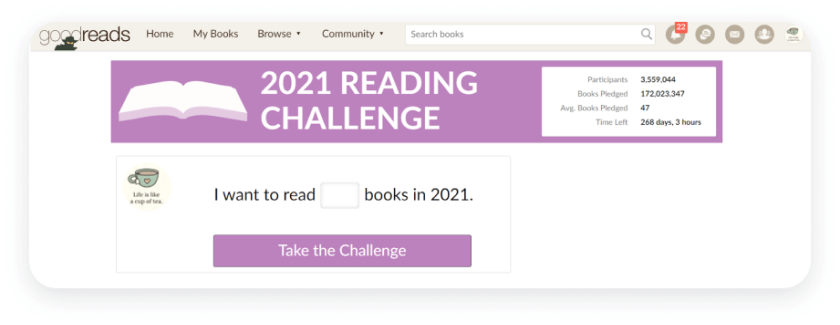
According to Harvard Business Review, games tap into “basic human drives for autonomy (you control your own space), for master (you get better over time), and for a sense of purpose (you’re aiming at a well-defined goal).” That’s why applying gamification brings benefits to many areas.
For example, eCommerce brands use gamification to create an attractive loyalty program. Universities apply gamification to turn a heavy-text lecture into a more engaging lesson. Companies can gamify their onboarding experience to make new employees more comfortable on their first days.
How gamification works
Gamification works by encouraging users to take a desired action by revealing a reward, showing a path to mastery, or creating a challenge.
It can also be implemented by “taking advantage of human psychological predisposition to engage in gaming,” as Neil Patel explains.
The action can be subscribing to a newsletter, filling out a profile, buying a product, upgrading to a higher subscription, or booking an appointment.
Brands often use common game mechanics like points, badges, levels, challenges, leaderboards, rewards, status-building, competition, or levelling-up. That said, gamification isn’t games — games are much more complex.
Benefits of gamification
To understand why gamification works, let’s take a look at the psychology behind it.
1. Gamification gives users control
As humans, we don’t want to be forced to do anything — we like to feel in control. By applying gamification, you can give your users that feeling.
For example, shoppers can enter their email addresses and get a 10% discount or click “No, thanks” to close the popup. In this case, shoppers control their experience.
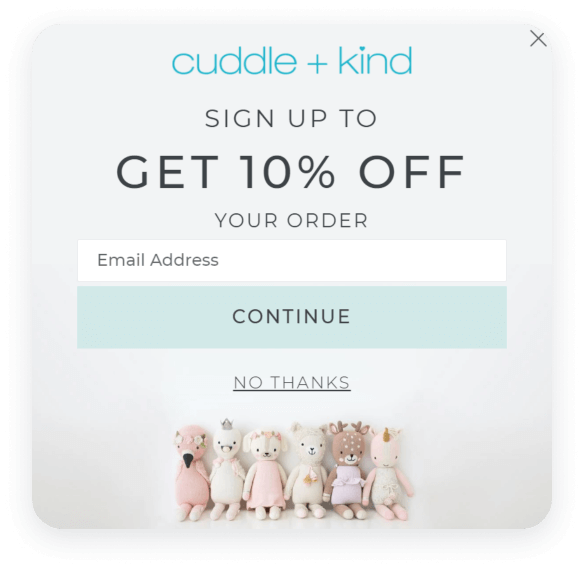
2. Gamification tells users where they’re heading on
When you play a game, you see a map that shows you where you’re at a certain point and where you should be going. Many eCommerce brands apply this to different aspects of their websites, especially checkout pages.
Here is a good example from Bee Inspired Clothing. The checkout progress indicator acts as a map for shoppers, telling them where they are now in the process.
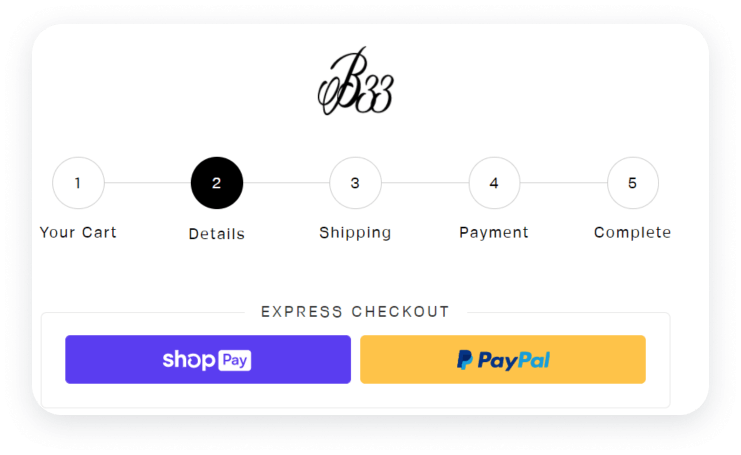
3. Gamification helps reinforce good behaviors
In games, when you complete a level, you get a reward — say, a higher level, a new gear, some coins, power-up points. That motivates you to continue to play and master the next level to get more.
Gamified websites and apps apply the same logic. For example, when you sign up for a newsletter, you instantly get a discount for your first order. So you have the motivation to stay longer on the website, browse products, and order something using the discount code.
By offering rewards at each stage of a customer’s journey, you can reinforce what you want them to do.
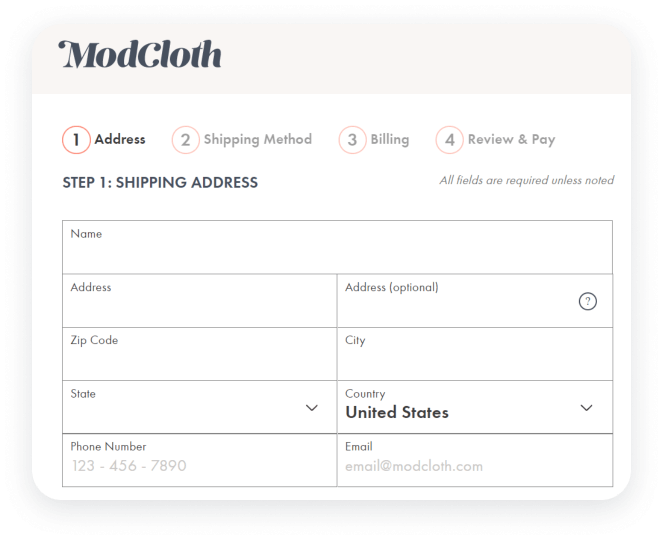
4. Gamification offers a sense of achievement
Accomplishment is a strong driving factor for most of us. In everything we do, we want to achieve something. And when we do, we strive to do more to accomplish more.
Medium understands this principle and applies to their gamification strategy. When you write and publish a lot about a specific topic on Medium, you’ll get the label “Top writer.”
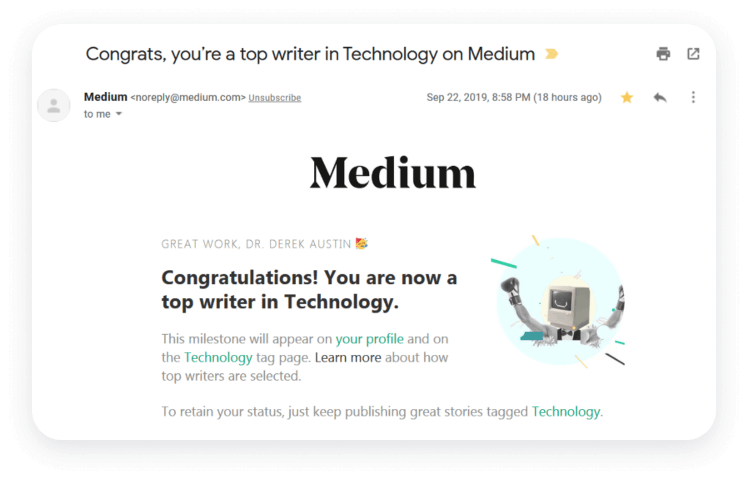
Or, when your article gets curated by Medium editors, they’ll send you a congratulatory email like this:
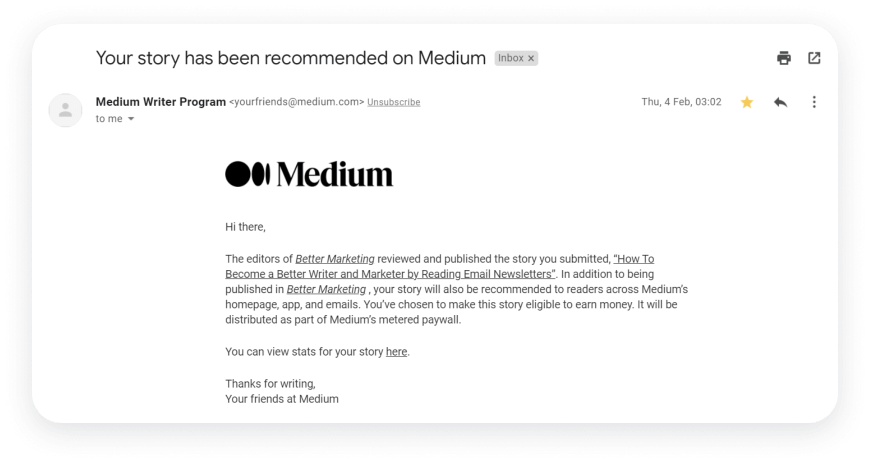
5. Creates exclusivity
There’s a reason why people are willing to pay a lot of money to pre-order an iPhone X or get a first-class plane ticket.
Of course, no matter when you buy an iPhone X, you’ll get the same iPhone X as others do. But when you pre-order something, you’re not paying for the product itself — you’re paying for status and the pleasure of having it before everyone else.
Exclusivity creates intrigue, jealousy, and curiosity. And many people are willing to pay a premium price for that exclusivity. It gives us a huge dopamine hit.
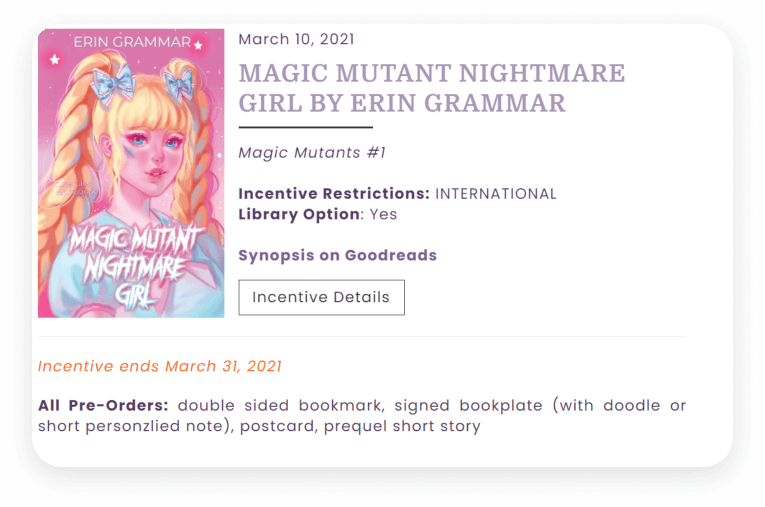
6. Encourages teamwork and collaboration
Multiplayer games are addictive because they bring like-minded people together and create a sense of community. They’re thriving, especially in this pandemic lockdown when we can’t meet each other in person but virtually.
This translates well to gamification. If you can make users feel like a part of a community on their journey, you bring them a positive user experience.
Indiegogo is an excellent case study for this. They allow campaign owners to offer their backers exclusive perks like T-shirts or a handwritten thank you note. But what makes it phenomenal is when a project finally reaches its funding goal, it’s like a shared achievement.
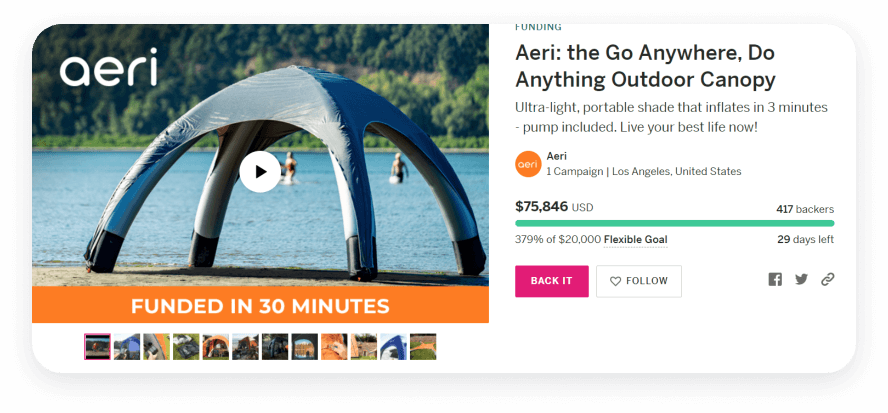
Gamification examples from different sectors
Done right, gamification can help enhance customer experience, drive brand loyalty, and improve customer engagement. You can also expect a boost in conversions, sales, and repeat business.
Because of that, gamification is beneficial for many areas. Here are some gamification examples from different sectors.
1. Gamification in health
Healthcare companies apply gamification in health and wellness apps related to self-management, disease prevention, medication adherence, and more. For example:
CaféWell is a place for people to get physical, emotional, and financial support. Participants can track their progress in real time and earn points along the way.
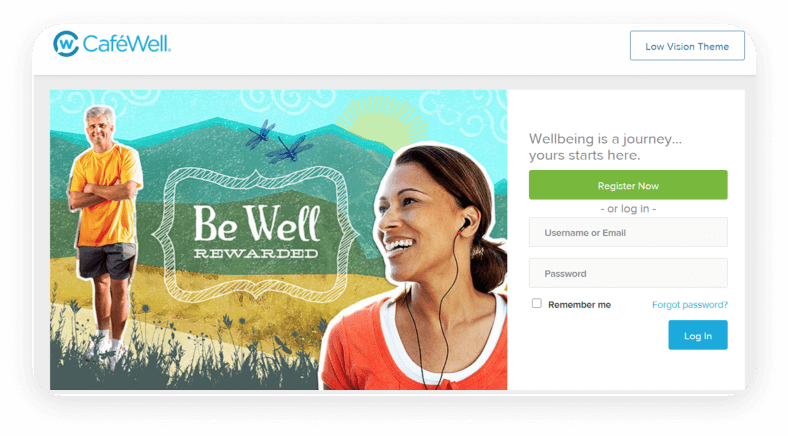
Mango Health is a smartphone app designed to help patients manage their medications and create healthy habits. Patients can create a schedule for taking medications or checking blood pressure. When they record all of their medications and habits for the day on schedule, they can earn Mango Points. The more points they get, the higher levels they reach.
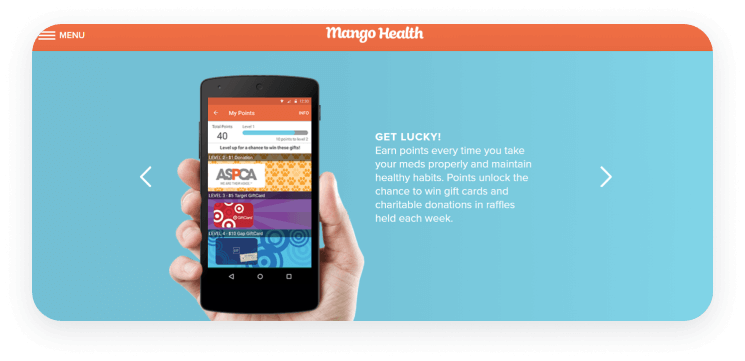
mySugr is a diabetes management app made for people with diabetes by people with diabetes. Every time you put something in your notebook, you earn points. Whether it’s a note, a blood sugar, a snack, a dose of insulin, or just the fact that you’re feeling stressed. When you reach 50 points each day, you tame your monster.
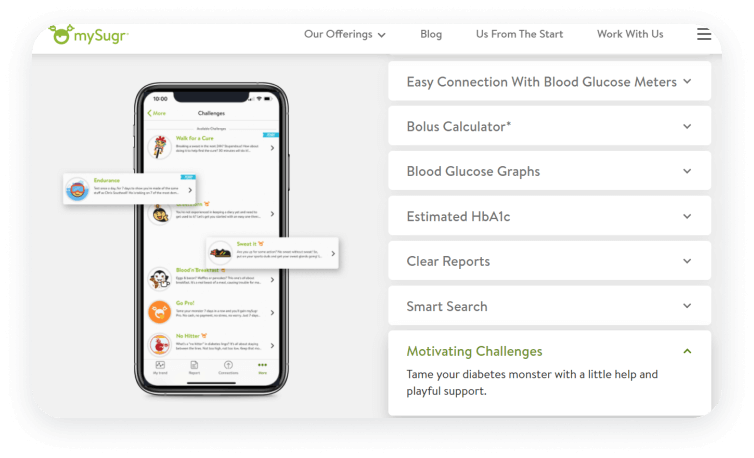
2. Gamification in learning
eLearning and gamification have found a foothold not only in primary, secondary, and university schools but also in graduate programs and employee education. Gamification helps learners process new information faster, improve motivation and engagement, and encourage continued learning.
LetterSchool is a good case of applying gamification in online education. It’s a handwriting app allowing children to play to improve reading and writing skills. They can play with letters’ shapes, names, and sounds by tapping and tracing. Once they complete a level, they move to another with a new set of games and a greater level of complexity.
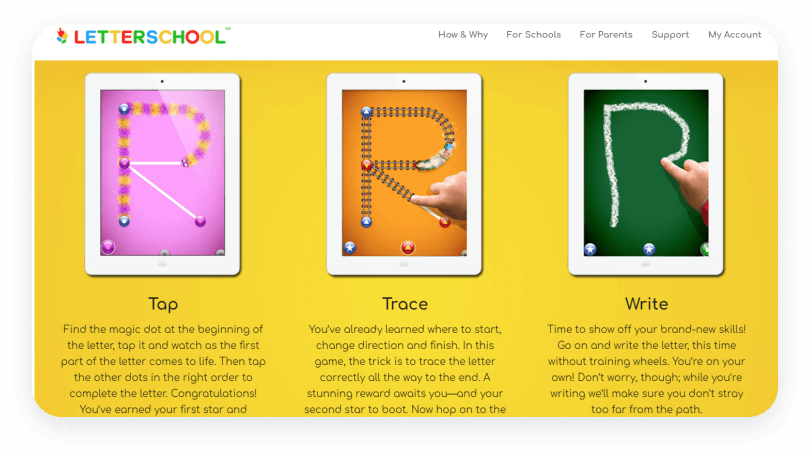
Word Search is another excellent game-based learning app. It has more than 22,000 puzzles distributed in 37 languages, three sizes, and three difficulties. It’s great for training brains and building vocabulary.
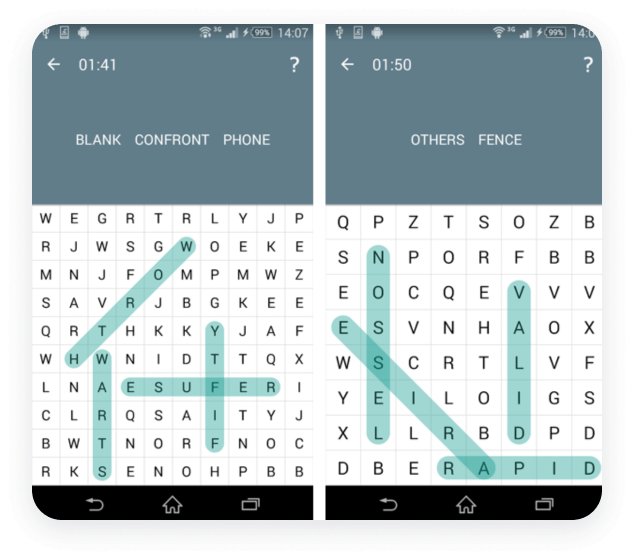
If you love answering trivia questions, you might be familiar with Trivia Crack. It’s designed to help you learn about art, sports, science, and more while having fun with friends. Trivia Crack applies many game elements like collecting characters, spinning the wheel, game modes, feeding pets, missions, and ranking.
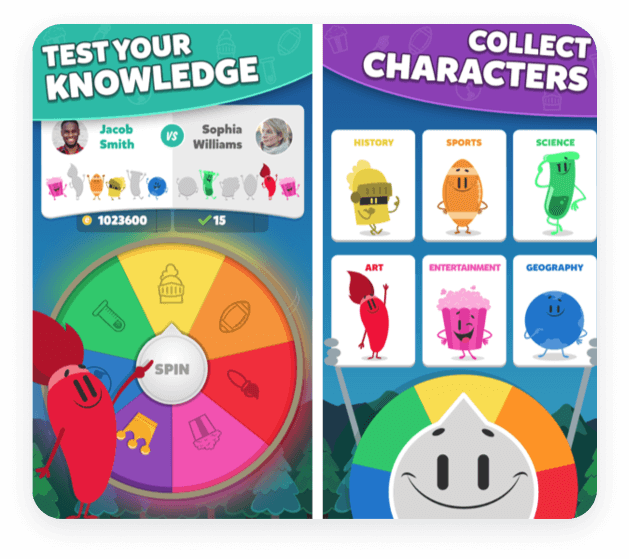
3. Gamification in marketing
Today, gamification is more than a strategic decision. It has become a basic tool for brands to deal with digital consumers who spend nearly 2.5 hours per day on the Internet or check their smartphone an average of 96 times per day.
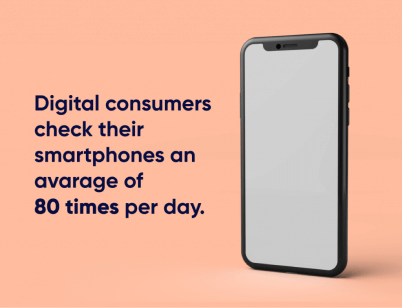
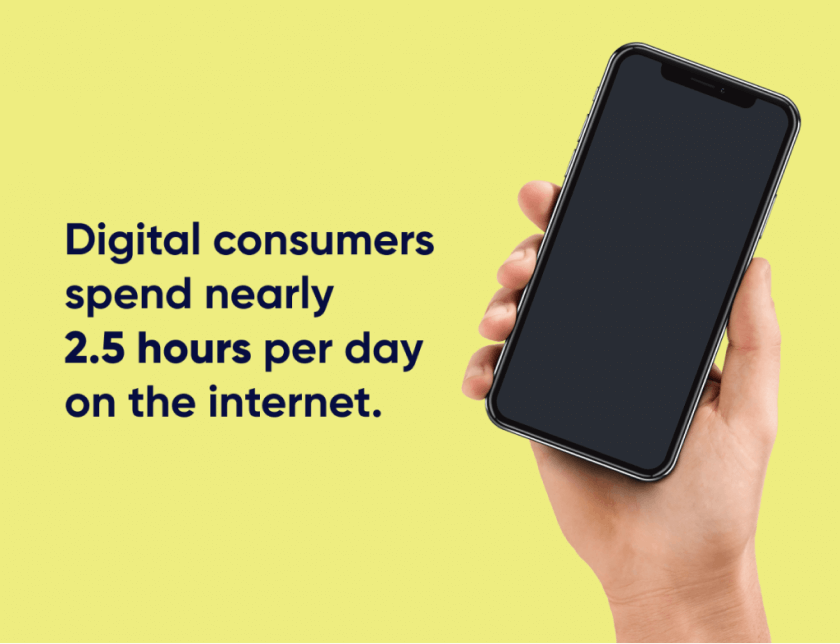
Sephora has experienced great success with using gamification for their loyalty program. Customers who sign up for their Beauty Insider program can receive points, gifts, savings, and other perks for their loyalty.
Here’s a quick rundown of some of the rewards Sephora offers.
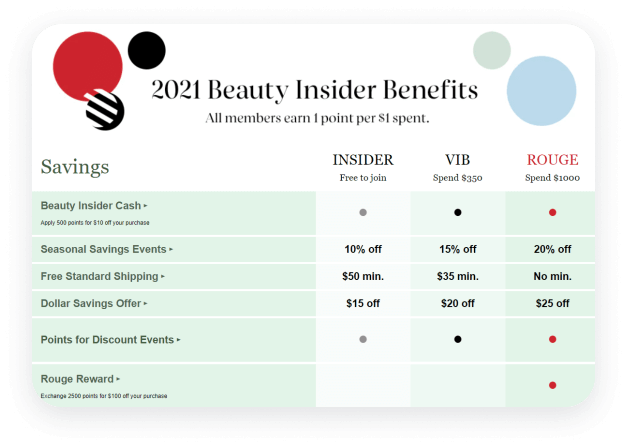
Scavenger hunts are also an interesting game-based marketing idea. The idea is that you organize a scavenger hunt where shoppers look for a hidden symbol within your site. The first customers who find it’ll get a cool prize or some type of discount. This is a technique that Evy Benita used a while back for her online store.
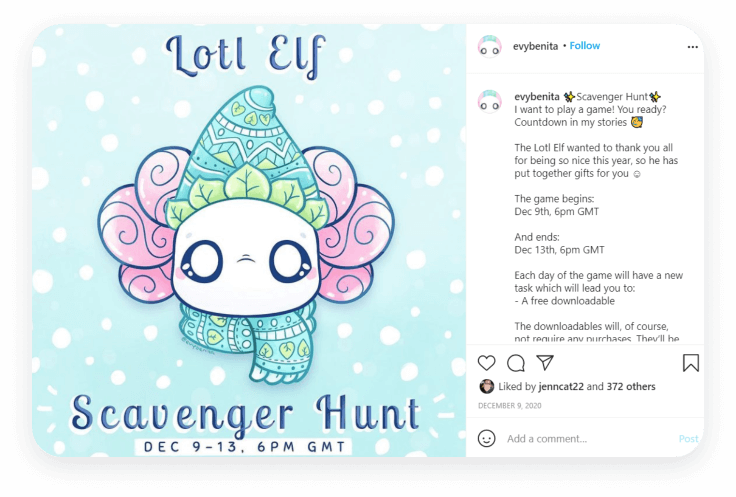
Another popular strategy involves showing a style quiz on a website. Shoppers who take the quiz will answer some questions about their preferences and habits. Once they finish the quiz, they’ll be given product recommendations that fit their needs and a discount to shop in the store.
Similarly, cooking meal kits at home brings a blend of challenge and reward, much like a game. For example, HelloFresh offers members an enticing ’16 Free Meals – Free Dessert For Life’ deal as part of their subscription signup, turning the cooking experience into an engaging and rewarded practice. This aligns perfectly with gamification’s principles of boosting engagement and offering palpable rewards.
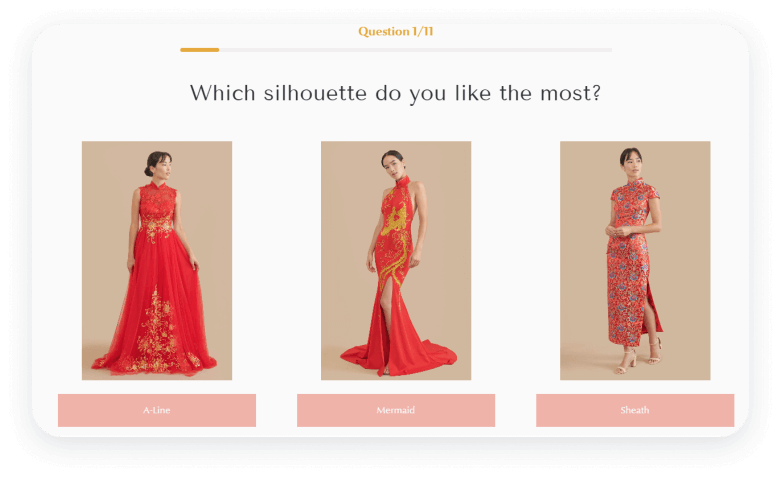
4. Gamification in finance
Some people are skeptical about using gamification in banking, but it’s actually used for quite a long time. Think about any credit card that gives you points or cashback when you spend. Or discounts you can get if you use your card to buy at a certain mall. They’re all gamification applications.
Long Game is an app that helps people save money while getting rewards for doing that. It rewards you for everyday saving with chances to play games and win real cash prizes through your bank account.
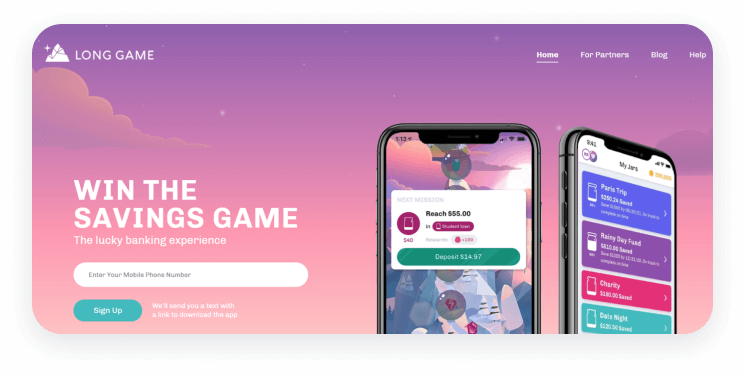
Nestlings is another game-based app designed to take the anxiety out of having to save money. It resembles the app with a collection of whimsical creatures characters. These characters endeavor to squirrel away money for you, reacting to your spending habits in the real world.
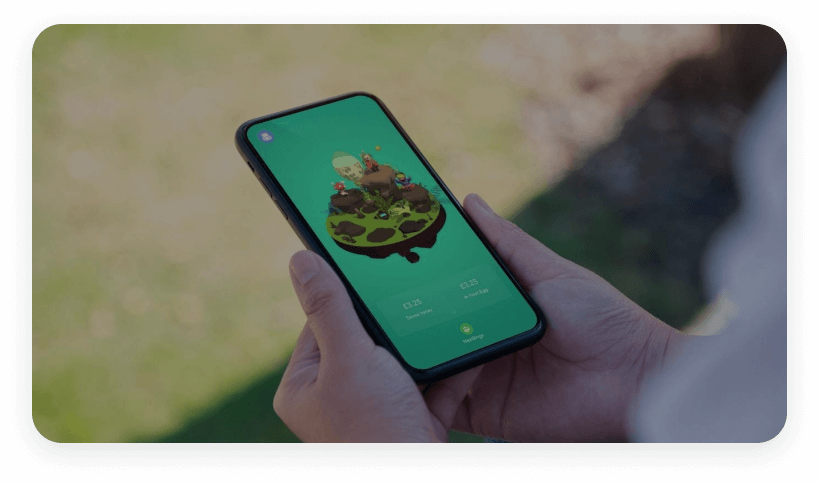
5. Gamification in SaaS
SaaS (software-as-a-service) businesses use gamification to educate customers, increase engagement, onboard new users, drive conversions, loyalty, and more.
Grammarly is everyone’s favorite grammar checker and writing improvement tool. They apply gamification in many ways, but one of them is their weekly writing update that is personalized to every user.
In their weekly newsletter, they show how a user ranks against all of their 20 million users around the world.
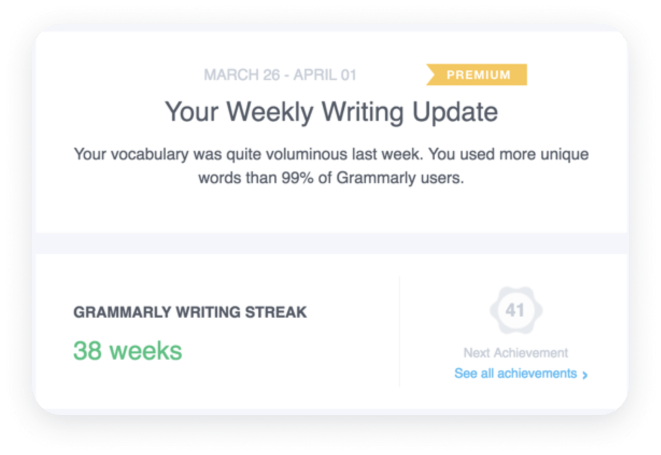
Notion also did a great job of applying gamification. They allow users to earn credits that cover the cost of a paid Notion plan and even make them free for certain periods. Users can earn credit by logging in on the web, migrating from Evernote, or using Web Clipper for Chrome.
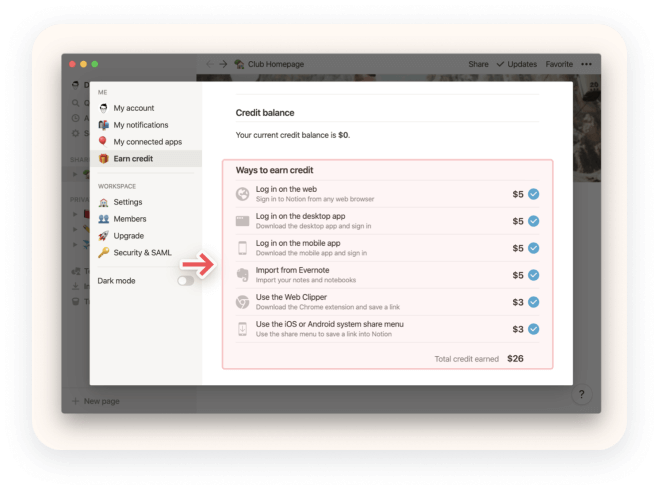
Customer support software Freshdesk follows the gamification trend by adding an element of competition to agents using the platform. Agents who complete tasks will earn points, level up, win rewards, and work towards achievements that they want to unlock.
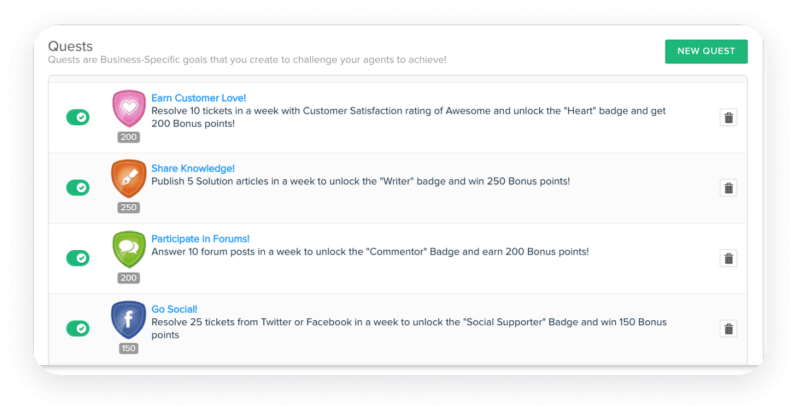
Source: Freshdesk
Now you’ve learned game dynamics can bring a lot of benefits to your customers and business. And Insider makes it easier for you to start implementing a gamification strategy.
How Insider helps you to gamify your business
Insider offers four powerful gamification techniques to your business: web push, scratch to win, wheel of fortune, and progress bar. Let’s see how each works.
1. Web push
A web push notification is a message delivered straight to a subscriber’s desktop when they have a browser open. This message is short, actionable, contextual, timely, and personalized, making it perfect to re-engage and retain website visitors.
Insider supports five types of web push: Visitor segmentation, stock push, price alert push, abandoned cart recovery, accelerated mobile pages (AMP) support, action buttons, API targeted push, and dynamic content.
You can gamify your web push notifications by telling customers how many products they just saw have been bought by others. Or create a sense of urgency by giving them a discount within a limited time.
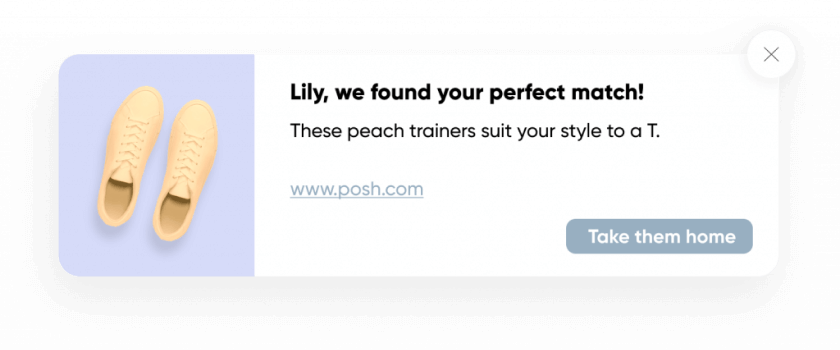
2. Scratch to win
The scratch to win feature allows you to trigger visitors’ curiosity with a scratch to win coupon on your mobile site.
Doing that not only adds a new dimension to your brand’s engagement with loyal customers through the app, but it makes the shopping experience more fun and keeps your offers front-of-mind.
You can set up the system in a way that every time someone makes a transaction with your business, they unlock a “scratch to win” offer in the app that has a 1 in 5 chance of being a winner. The prize could be anything, for example, a free gift or $10 off their next purchase.
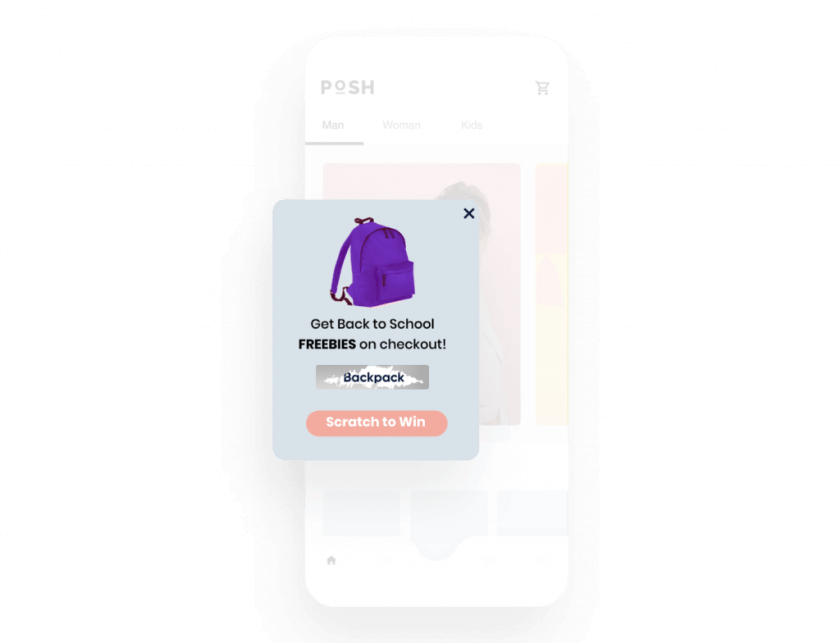
3. Wheel of fortune
A wheel of fortune is an interactive wheel that enables your website visitors to spin the wheel and enter their email addresses to get a reward.
Insider allows you to design the wheel as you want, for example, changing your popup placement, colors, font, or the size of the wheel itself. With this tool, you can make a professionally designed wheel of fortune without writing code.
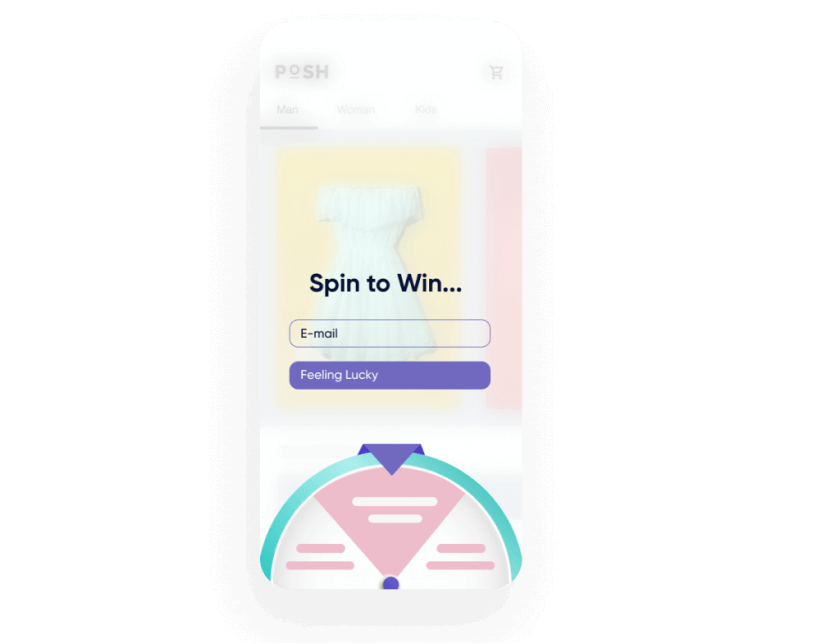
4. Progress bar
Adding a progress bar lets shoppers know exactly how many items they need to add to their cart to receive a special offer, like free shipping. It’s a great tactic to increase your average order value (AOV).

According to Danny Maco, former University Games general manager, “By putting a progression bar there, people are able to get that feedback of — hey I just accomplished something and I can see real stimulus coming back to me that it’s being accomplished. There’s a certain sense of reward to see that you’re progressing.”
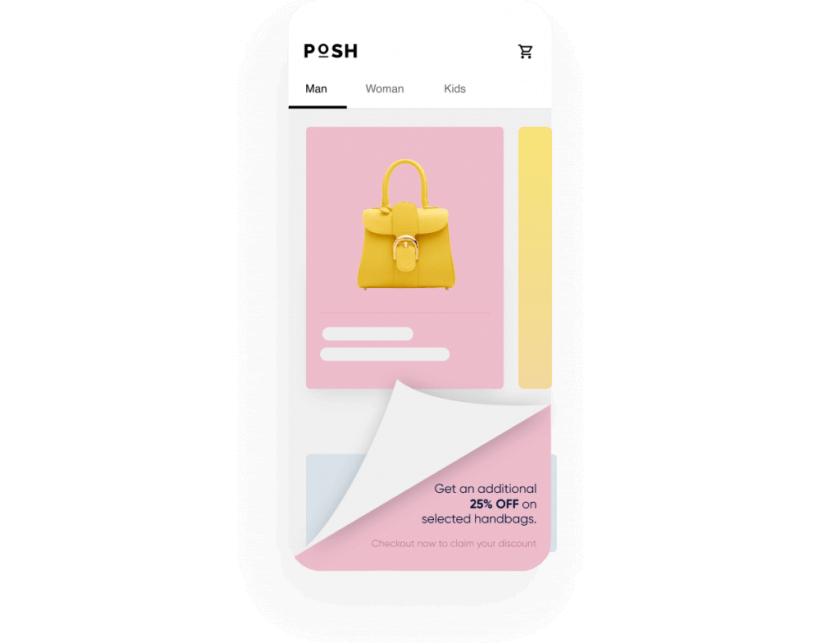
Time to bring gamification to your business!
Whether you’re running a SaaS startup, a brick-and-mortar shop, an eCommerce store, or a bank, you can use gamification to achieve your business goals.
Contact us for a demo to see how Insider helps your gamification strategy. In case you need further support, connect with our digital growth consultants — we’re more than happy to give you a hand!



















